Regarding the Donald Trump administration's announcement of imposing a 46% tax on Vietnamese goods, VietNamNet reporters had an interview with Dr. Le Quoc Phuong - former Deputy Director of the Center for Industry and Trade Information (Ministry of Industry and Trade).
We were very proactive, but America was faster.
- Many businesses were shocked and confused when they heard that the US imposed a 46% tax on Vietnam. So, what do you think about the new tax policy that the US just announced?
Dr. Le Quoc Phuong: We already know that the Trump 2.0 administration has declared that it will use import tariffs as its main “weapon” since before taking office. As soon as he took office, President Donald Trump immediately imposed tax increases on a number of products from various countries.
April 3rd is the strongest tax blow on all imported goods from countries.
Vietnam is affected because the US is the largest export market. In 2024, our country exported nearly 120 billion USD to the US, accounting for 29.5% of total export turnover. Meanwhile, importing US goods is still quite small, so the trade surplus is large. Therefore, the US imposing taxes on Vietnamese goods is understandable and predictable. However, the 46% tax rate that the US imposed on Vietnam surprised me. This could be a big shock to us.

Many industries in our country are affected when the US imposes a 46% tax on Vietnamese goods. Photo: Hoang Ha
Previously, the Government took very proactive and quick actions, such as in mid-March, the Prime Minister's Special Envoy, Minister of Industry and Trade Nguyen Hong Dien, went to the US to negotiate and made many commitments to import US goods.
A series of large Vietnamese corporations have signed cooperation agreements with US businesses, with the total value of signed economic and trade agreements reaching 90.3 billion USD and expected to be implemented from 2025.
On March 31, the Government issued Decree 73 reducing import taxes on a number of items, including many from the US such as: wood, chicken, apples, cherries, NLG gas, corn ethanol, soybeans, wood...
On April 1, the Minister of Industry and Trade signed a decision to establish a Drafting Committee and an Editorial Team to develop a Decree regulating Vietnam's strategic trade control. In the afternoon of the same day, the Minister chaired the first meeting and announced the draft Decree on strategic trade control for comments.
From that, we can see that the Government has proactively taken measures and acted very quickly. However, the US government is much faster than us.
Industries that are strongly affected
- Which Vietnamese industries will be most heavily impacted by the new US tax policy, sir?
As mentioned above, the US is the main market , accounting for a large proportion of Vietnam's total export turnover. Accordingly, when subject to a 46% tax, the more goods exported to the US will be affected.
For example, the group of electronic products, phones, computers, components, etc. will be strongly affected. FDI enterprises will be most affected because this is the group of products that accounts for a large proportion of total export turnover.
Besides, there are enterprises in the seafood, wood products, textiles, footwear, other agricultural products... industries of Vietnam, because the US is a traditional market, with a large export turnover.
- What specific measures can Vietnam take to ease trade tensions and avoid higher tariffs?
We cannot “retaliate” against the US like the EU, China, Canada… These countries have strong economic potential so they go all in. Meanwhile, Vietnam’s economy is weaker and its export turnover to the US is very large.
In this new context, the Government needs to continue negotiations with the US.
In addition, to reduce tensions, we need to consider lowering import tariffs on US goods. This needs to be done quickly. We currently do not have many competitive sectors with this country, so we should not worry too much about reducing import tariffs affecting domestically produced goods.
In reality, Vietnamese and American goods complement each other, so reducing import tariffs is not a concern. We have to accept the loss when reducing import tariffs. I think that level of loss is completely acceptable.
It is necessary to increase the import of US goods to improve the trade balance. In addition, there must be policies to support businesses.
Businesses need to do everything to 'hold on'
- In the context of increasing global trade instability, what do you think is the trade strategy to ensure sustainable economic growth?
Diversifying export markets is very important but also very difficult. We must understand that in every country, there are a few key markets for export.
The US is a large market for many countries in the world. Vietnam has always identified the US as its main export market, but accounting for nearly 30% of turnover means it is too dependent.
In recent years, ministries and sectors have always promoted trade and opened new markets. Enterprises have tried to diversify export markets but have not succeeded. Because selling to large, familiar markets is easier than selling to small, niche markets.
However, this leads to risks for businesses when situations such as 46% tax occur. Therefore, in the current context, it is necessary to diversify the market and find potential markets.
In addition, there is the eternal but mandatory story of improving the business environment to make it transparent, reducing administrative procedures, and making management more open... Thereby, creating favorable conditions for businesses to improve their competitiveness.
- How do Vietnamese enterprises, especially private enterprises, need to change their production and business strategies to adapt to the increasingly volatile global trade environment?
The US is a large and potential market that businesses cannot ignore. However, when faced with a high tax rate of 46%, it is necessary to negotiate with US importers so that each side can bear a part.
There are two scenarios in this story. First, if the 46% tax is imposed, US importers can choose not to import, which will lead to having no goods to produce and sell. Second, if the import does not increase the price, Vietnamese businesses will not be able to bear it. In the end, it is still a matter of negotiating for mutual benefit.
Importantly, businesses must also determine that profits will decrease sharply, must cut costs, save materials... to hold out while waiting.
I think that when the US imposed a 46% tax on Vietnam, they were also waiting to see what we would do next. If we have goodwill measures such as reducing taxes, increasing imports of goods... then it is very possible that the US will lower taxes for a while, but it cannot maintain them forever. The problem is how far we can go.
Vietnamnet.vn
Source: https://vietnamnet.vn/my-ap-thue-46-voi-viet-nam-can-dam-phan-va-ha-thue-nhap-khau-voi-hang-my-2387533.html




![[Photo] Chinese, Lao, and Cambodian troops participate in the parade to celebrate the 50th anniversary of the Liberation of the South and National Reunification Day](https://vphoto.vietnam.vn/thumb/1200x675/vietnam/resource/IMAGE/2025/4/30/30d2204b414549cfb5dc784544a72dee)
![[Photo] Cultural, sports and media bloc at the 50th Anniversary of Southern Liberation and National Reunification Day](https://vphoto.vietnam.vn/thumb/1200x675/vietnam/resource/IMAGE/2025/4/30/8a22f876e8d24890be2ae3d88c9b201c)
![[Photo] The parade took to the streets, walking among the arms of tens of thousands of people.](https://vphoto.vietnam.vn/thumb/1200x675/vietnam/resource/IMAGE/2025/4/30/180ec64521094c87bdb5a983ff1a30a4)








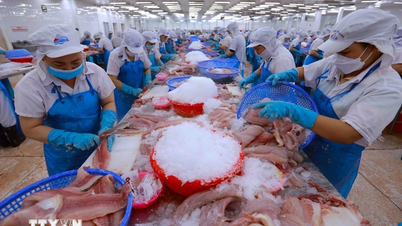

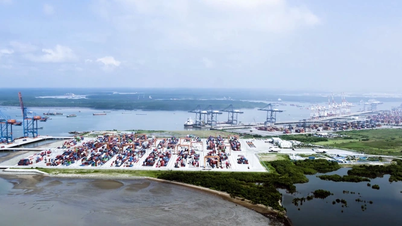

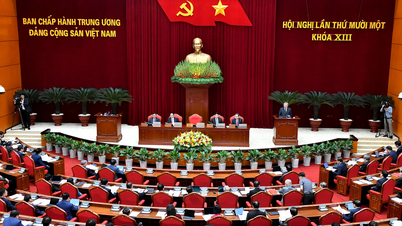










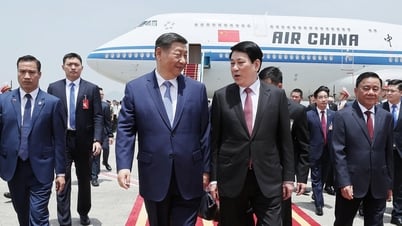
![[Photo] Performance of the Air Force Squadron at the 50th Anniversary of the Liberation of the South and National Reunification Day](https://vphoto.vietnam.vn/thumb/1200x675/vietnam/resource/IMAGE/2025/4/30/cb781ed625fc4774bb82982d31bead1e)












































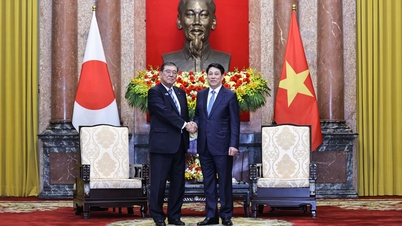






















Comment (0)